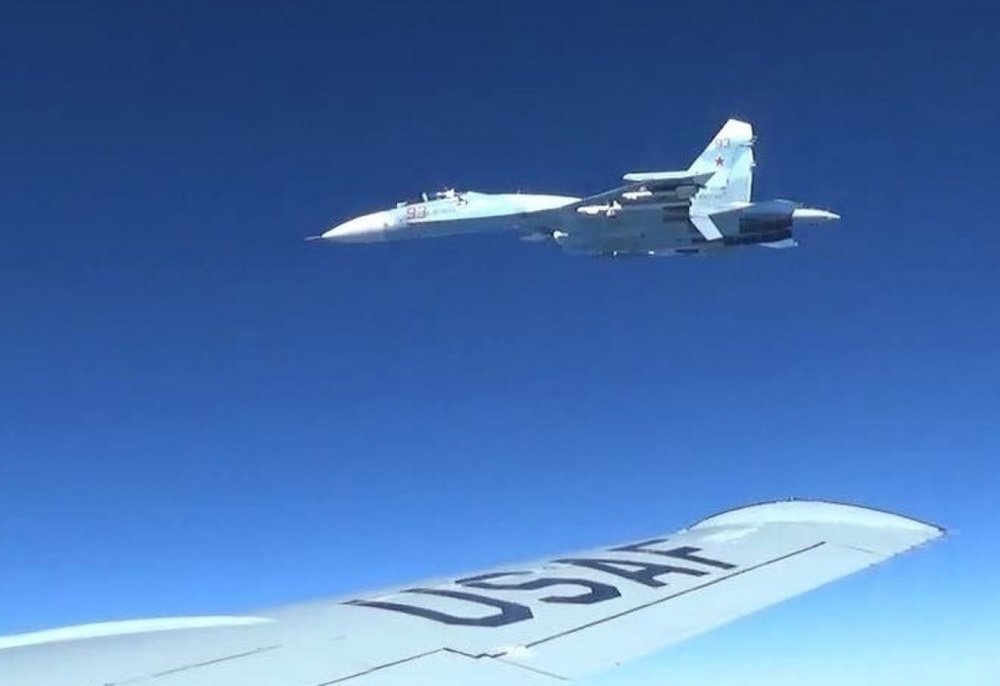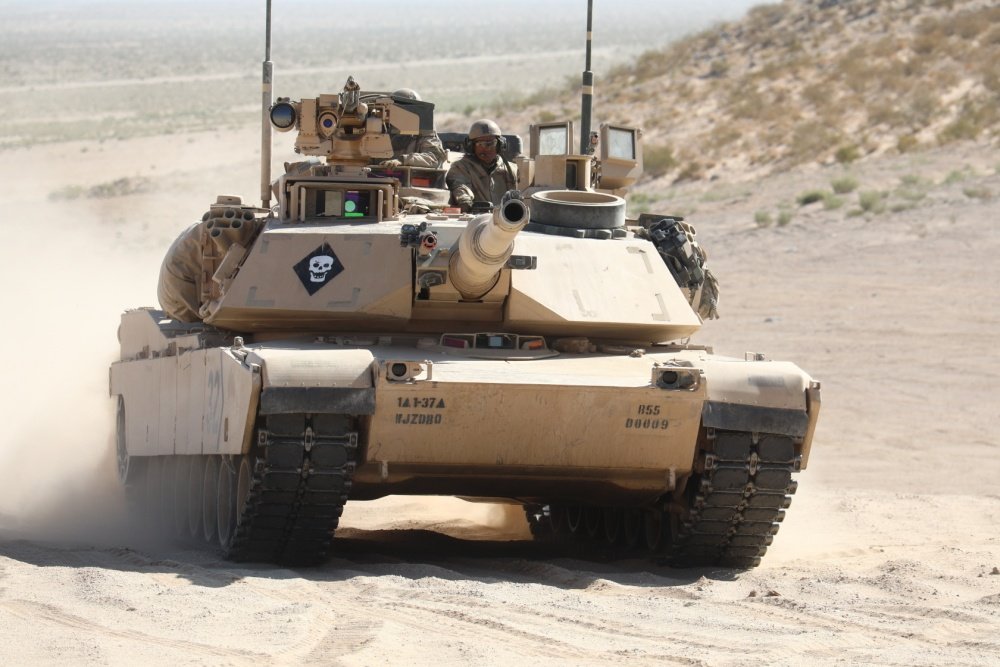Opinion: The US Needs to Reevaluate Its ‘Red Line’ in Era of Hybrid Warfare

In his opinion for the Jacobellis v. Ohio Supreme Court ruling in 1964, Justice Potter Stewart offered his famous definition of hardcore pornography.
“I know it when I see it,” Potter wrote.
Used to be you could say the same thing about war and peace. Yet in this hybrid warfare era, it’s often hard to tell the difference.
Yesterday’s news that Russia government hackers likely tried to steal COVID-19 research from Western institutions is just the latest salvo of Moscow’s undeclared, gray-zone war against the U.S., and the West more broadly.
We are already in a conflict with Russia — even if we don’t know it. But Russia’s goal isn’t conquest, it’s chaos. And the future battles of this conflict won’t necessarily be ones fought over territory, using tanks, troops, or warplanes. Rather, we will fight Russia in cyberspace and on the information battlefields. We won’t fight for territory, we will fight for the sovereignty of our citizens’ minds. Above all, we must recognize the true provenance of the threats against our nation and not fall into Russia’s trap by fighting against ourselves.
“One cannot understand how the Russian leadership thinks strategic issues without appreciating the fact that the Kremlin sees itself as being at war with the West,” wrote Daniel Goure, vice president of the Lexington Institute, in a May 2019 Department of Defense white paper on Russia’s strategic goals.
“As viewed from Moscow, the war is not total but it is fundamental. Since Russia is at war, for the Kremlin there is no separate gray zone, nor are there unacceptable forms of deterrence, compellence, or coercion,” noted Goure.

Hybrid warfare is the Kremlin’s contemporary take on a Soviet military doctrine called “deep battle,” in which front-line combat operations are supported with other actions meant to spread chaos and confusion within the enemy’s territory.
Russian hybrid warfare is not covert warfare. Rather, it’s the combined use of conventional military force with other means such as cyberattacks and propaganda, both on the battlefield and deep behind the front lines, to spread chaos and confusion. In conventional warfare, the effects of combat are limited to the ranges of the weapons used. In hybrid warfare, however, the battlefield knows no limit. It is, effectively, an edgeless war.
It’s true that America’s military dwarfs Russia’s. And Russia’s gross domestic product is about half that of California’s — roughly on par with that of Spain. But despite its material weaknesses, Russia is a hybrid superpower with an unparalleled ability to control the world’s attention economy.
“Russian leadership sees itself as at war with the U.S. and the West as a whole,” noted Nicole Peterson, a security analyst, in the Pentagon white paper.
“Russia’s strategies are continuously evolving and […] the discrepancy between the Russian and the U.S. understanding of ‘conflict’ and ‘war’ will continue to grow, leading to a higher risk of escalation in future situations involving both nations,” Peterson wrote.

In this new hybrid world order, a country’s sway isn’t measured by economic clout, hard military power, or even diplomatic soft power. Rather, it’s based on a country’s audacity — or shamelessness — in shaping public opinion at home and abroad. Russia is the master at this game. The U.S., for its part, is struggling to keep up.
Russia is able to threaten American security interests and undermine the stability of Western democracies without resorting to direct military action. Instead, by shifting the burden of conflict escalation onto its adversaries, Russia tests whether our leaders in the West are willing to retaliate against nonlethal, so-called “gray zone” activities with lethal military force.
Contemporary Russian military planners are targeting the Achilles’ heel of any democratic adversary — public opinion. China, too, is similarly waging an insidious, non-shooting war from the shadows, using cyberattacks and weaponized propaganda to weaken America’s global standing and advance its own national interests.
“Future confrontations between major powers may most often occur below the level of armed conflict. In this environment, economic competition, influence campaigns, paramilitary actions, cyber intrusions, and political warfare will likely become more prevalent,” wrote Navy Rear Admiral Jeffrey Czerewko, deputy director for global operations at the Joint Staff, in the Pentagon’s unclassified assessment of Russia’s strategic intentions.

Thus, for authoritarian regimes like those in Russia and China, hybrid warfare tactics offer a way to push back against America while tiptoeing around a conventional war. With that in mind, hybrid warfare is basically “a poor man’s war.”
According to a June 2019 report from the Institute for the Study of War:
“[Russian President Vladimir Putin] is sufficiently in contact with reality to know that he will fail if he attempts to regain anything approaching conventional military parity with the West. Putin has every reason to believe that outright confrontation with the American military will end badly for him.”
The Russians look to history for their education in how Western democracies will fight the next war. And World War II, above all other conflicts, has left an indelible impression on the Russian mindset. The stigma persists to this day that the Western allies, afraid of heavy losses, left the heavy fighting to the Soviets and only jumped into the European theater of war when Germany was sufficiently weak and victory was guaranteed. Whether right or wrong, this interpretation of history does much to shape modern Russian military doctrine.
In a modern conflict, the Russians assume that Western democracies will reach the limit of their appetite for inflicting violence and absorbing casualties before the tipping point after which Russia’s reservoirs of hard military power have been exhausted and the West’s material advantages become decisive. In short, Moscow is willing to play a game of chicken, assuming its adversaries will back down first when faced with the gruesome prospects of modern war. The West’s economic and technological advantages count for nothing if we don’t have the will to use them; the Russians know this.

The concept of “escalation dominance” was a key tenet of NATO’s nuclear deterrence strategy against the Soviet Union. In theory, U.S. military superiority would inherently deter the Soviet Union from going to war. The problem with the concept of escalation dominance, however, is that American public opinion could turn against a conflict well before its military had fully exerted its power.
Hybrid warfare ultimately puts the onus of escalation on the recipient of these tactics, thereby testing whether a country is willing to escalate a conflict from one defined by the vagaries of gray-zone warfare to a conventional military confrontation involving lethal force. An adversary like Russia or China likely feels emboldened to commit cyberattacks against the U.S. because they expect our decision makers to be reluctant to retaliate destructively.
Gray-zone tactics also create battlefield confusion, primarily in the command and control process, clouding the situational awareness of both front line troops and their commanders. When patchless Russian soldiers — the “little green men,” as they came to be known — appeared in Crimea in 2014, Ukrainian forces gave up without a fight due to command and control confusion and a reluctance to engage in open warfare.
For Western militaries, which prefer precision strikes with minimum risk of collateral damage, that kind of battlefield confusion can be paralyzing. But not always.

On Feb. 7, 2018, a force of mercenaries from the Russian outfit Wagner advanced on a Syrian Democratic Forces compound where U.S. special operations troops were also present. U.S. forces queried Russian commanders about the identity of the advancing militants. “Not our forces,” the Russians reportedly responded.
The Americans weren’t buying it — nor were they willing to risk being overrun. So, U.S. warplanes wiped out the advancing force in a wholesale rout. Reports vary, but hundreds of Russian mercenaries may have died.
Collateral damage is a reality of war, and an acceptable, if unavoidable, risk when conducting military operations on foreign battlefields. When in combat on foreign soil, U.S. military forces are often charged with making life or death decisions in the heat of combat, weighing the likelihood of collateral damage against threats to friendly forces.
Perhaps the outcome of the Syria battle would have been different if a substantial number of civilians were in the mix. Yet, when confronted with an unknown force advancing on U.S. troops, American commanders were overwhelmingly aggressive with the use of lethal force.
In an April 2018 op-ed for the Wall Street Journal, Tod Lindberg, a senior fellow at the Hudson Institute, wrote that the U.S. military decimation of the Wagner force in Syria “created a new precedent for how to counter Russian ‘hybrid war.’”

America’s military has a clear technological edge over its adversaries — along with better-trained personnel and a more flexible chain of command. More importantly, however, American military personnel have the natural attributes of autonomy, creativity, and the appetite for taking risks that are necessary to successfully combat hybrid warfare tactics. That’s our culture, both as a military and American society in general. We need to make sure we don’t lose these advantages.
With this new reality in mind, U.S. national defense doctrine must grapple with how to define the proportionate use of military force in the hybrid war era. After all, America’s nuclear triad and its F-22 fighters aren’t useful deterrents against Russian election meddling or against Russian hackers trying to steal COVID-19 vaccine research.
Similarly, economic sanctions haven’t proven particularly useful at dissuading Russia against further military aggression against Ukraine. Nor have sanctions done much to put an end to Russia’s global propaganda blitz and its brazen espionage operations against the West. Similarly, diplomatic finger wagging and a trade war haven’t significantly changed Beijing’s behavior, either.

Looking forward, it’s clear American leaders need a clear calculus by which to measure the ethical use of military force to both deter and retaliate against acts of hybrid aggression. For example, at what point do you go kinetic, and therefore lethal, when retaliating against a cyberattack? Or, when is it ethical to accept free-speech trade-offs for the sake of muting weaponized propaganda?
Our leaders need to rethink the rules of war — both our moral guidelines for how wars should be fought, as well as the reasons for which wars should be waged at all — jus in bello and jus ad bellum, respectively.
The stakes couldn’t be higher. If Russia or China oversteps America’s red line for tolerating gray-zone aggression, it could spark a major war, risking a nuclear exchange.
As Peterson wrote in the Pentagon white paper on Russia’s strategic goals, “It is imperative that the U.S. establishes a consensus definition of ‘gray zone’ and reevaluates old paradigms defining war and peace, as we enter a new era of international politics which is defined by shades of gray.”

BRCC and Bad Moon Print Press team up for an exclusive, limited-edition T-shirt design!
BRCC partners with Team Room Design for an exclusive T-shirt release!
Thirty Seconds Out has partnered with BRCC for an exclusive shirt design invoking the God of Winter.
Lucas O'Hara of Grizzly Forge has teamed up with BRCC for a badass, exclusive Shirt Club T-shirt design featuring his most popular knife and tiomahawk.
Coffee or Die sits down with one of the graphic designers behind Black Rifle Coffee's signature look and vibe.
Biden will award the Medal of Honor to a Vietnam War Army helicopter pilot who risked his life to save a reconnaissance team from almost certain death.
Ever wonder how much Jack Mandaville would f*ck sh*t up if he went back in time? The American Revolution didn't even see him coming.
A nearly 200-year-old West Point time capsule that at first appeared to yield little more than dust contains hidden treasure, the US Military Academy said.












